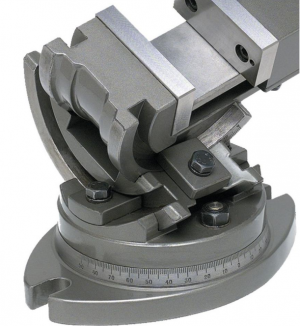- Joined
- Sep 8, 2019
- Messages
- 4,392
This required rigidity is probably why the school used a Bridgeport knee type mill.If you want to cut holes at other than 90º, you will need to make a jug/fixture to do so. Angle iron would form a suitable cradle and a hginge and an adjustable brace would allow setting the desired angle. It should be well secured to minimize shifting and vibration. Cutting a hole at that angle will require a very rigid hole saw setup due to the extreme side forces at play.
My vise does have a swivel base, but I am not seeing how to use the swivel base to cut a 60 degree notch.You might consider a fine pitch roughing end mill and a swivel base for your vise if you plan to use the mill. An even faster way is a custom small wheel attachment on a belt sander - it will notch tubing in seconds.
Wow, that tube notching belt sander in the video was making quick work of that tubing!If you plan to do a lot of cuts at odd angles then a 3-way tilting vise might be worth buying. They are expensive but will hold the work very securely for use with a milling cutter. Wilton makes one and I'm sure there is a cheaper import out there, too.
At these prices, I would seriously consider a 2 X 72 belt sander with small wheel attachment. It would be an extremely useful tool for a fabricator to own. This will give you and idea of what I mean.

